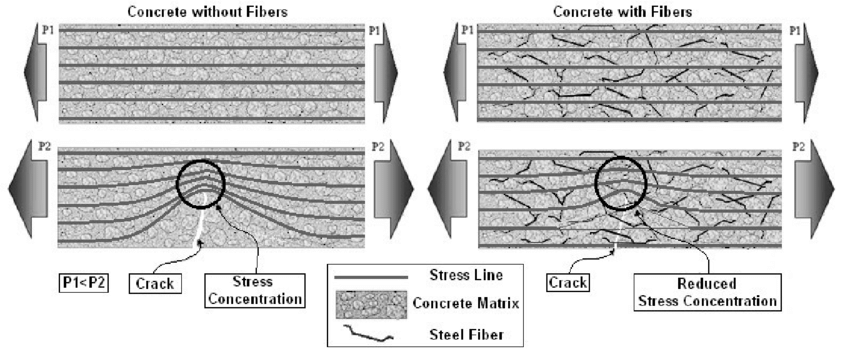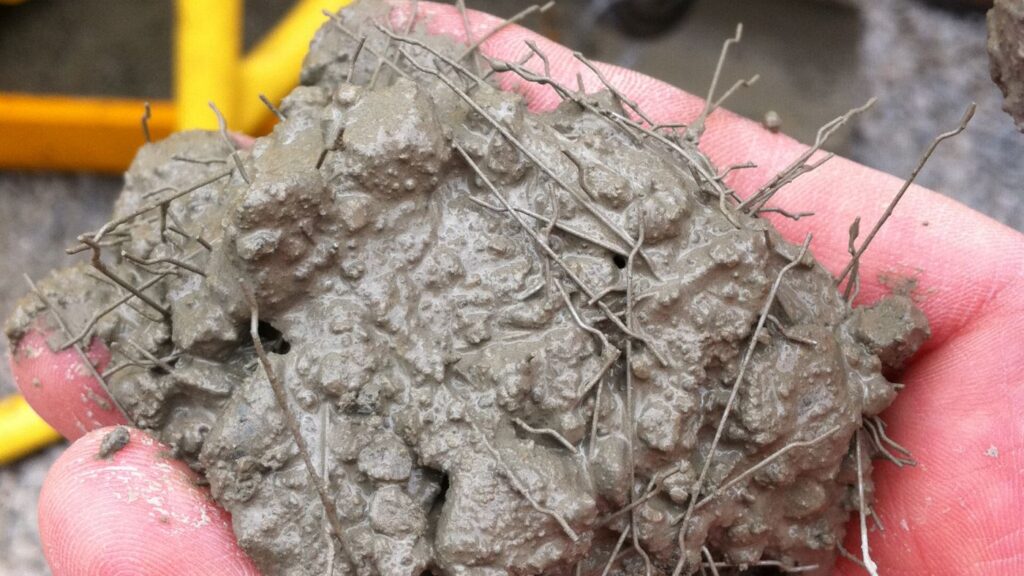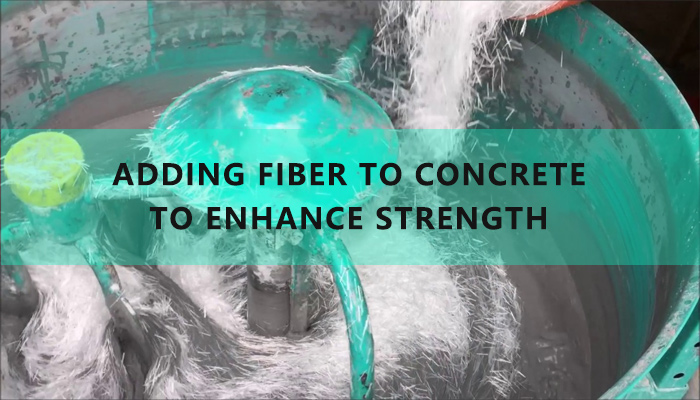In the world of construction and engineering, the significance of reinforcing concrete cannot be overstated. In recent years, the practice of adding fiber to concrete has gained immense popularity for its ability to boost the strength and durability of structures.
The Advantages of Adding Fiber to Concrete
Adding fiber to concrete introduces several key benefits, making it a versatile choice for construction projects. These fibers enhance tensile strength, and crack resistance, and reduce the need for traditional steel reinforcements, making structures more cost-effective and durable.
Types of Fibers and Their Applications
There are various types of fibers that can be incorporated into concrete mixtures. These include steel fibers, synthetic fibers, glass fibers, and natural fibers.
Each type has unique properties and is suited for specific applications. For instance, steel fibers are ideal for industrial floors, while synthetic fibers work well in residential projects.
Steel Fiber Reinforced
Concrete Steel fibers, often used in industrial settings, increase the structural integrity of concrete. They enhance load-bearing capacity and are resistant to cracking, making them an excellent choice for projects where heavy machinery and traffic are involved.

Synthetic Fiber Reinforced Concrete
Synthetic fibers, such as polypropylene or nylon, are known for their ability to improve durability. They are commonly used in residential applications to reduce the risk of shrinkage cracks and provide long-lasting surfaces.
Glass Fiber Reinforced Concrete
Glass fibers offer unique aesthetic possibilities due to their transparency and lightweight properties. This type of fiber is used in architectural projects, adding both strength and visual appeal to structures.
Natural Fiber Reinforced Concrete
Natural fibers like jute, coconut, or sisal offer an eco-friendly alternative. They are particularly popular in areas where sustainability is a top priority. These fibers improve concrete’s crack resistance and reduce the carbon footprint of construction projects.
Key Considerations
When Adding Fiber to Concrete When incorporating fiber into concrete, it’s essential to consider the right type of fiber for your project, the appropriate dosage, and the mixing process.
Uniform dispersion and proper curing are crucial to achieving the desired results. Consulting with a concrete expert can ensure a successful outcome.

Examples of Successful Projects
Many iconic structures worldwide have benefited from the addition of fiber to concrete. The Hoover Dam and the Burj Khalifa are prime examples of how fiber reinforcement enhances structural integrity and longevity. These projects stand as testaments to the power of fiber-reinforced concrete.
Conclusion
Adding fiber to concrete has become a game-changer in the construction industry. It offers an array of advantages, from increased strength and durability to cost-effective solutions. The various types of fibers available make it possible to tailor concrete mixtures to specific project needs.
To harness the full potential of fiber-reinforced concrete, understanding the different types, applications, and best practices is crucial. Whether you’re constructing a skyscraper or a backyard patio, incorporating fiber into your concrete mix will undoubtedly lead to stronger, more resilient structures. Don’t miss the opportunity to revolutionize your construction projects—consider adding fiber to concrete today.
By embracing the possibilities of fiber-reinforced concrete, you can unlock a world of construction opportunities that are stronger, more durable, and more cost-effective.
So, whether you’re erecting a skyscraper or creating a beautiful backyard patio, don’t miss out on the chance to enhance your projects with fiber reinforcement. Explore the various types of fibers, understand their applications, and follow best practices to ensure your concrete creations are built to last.
